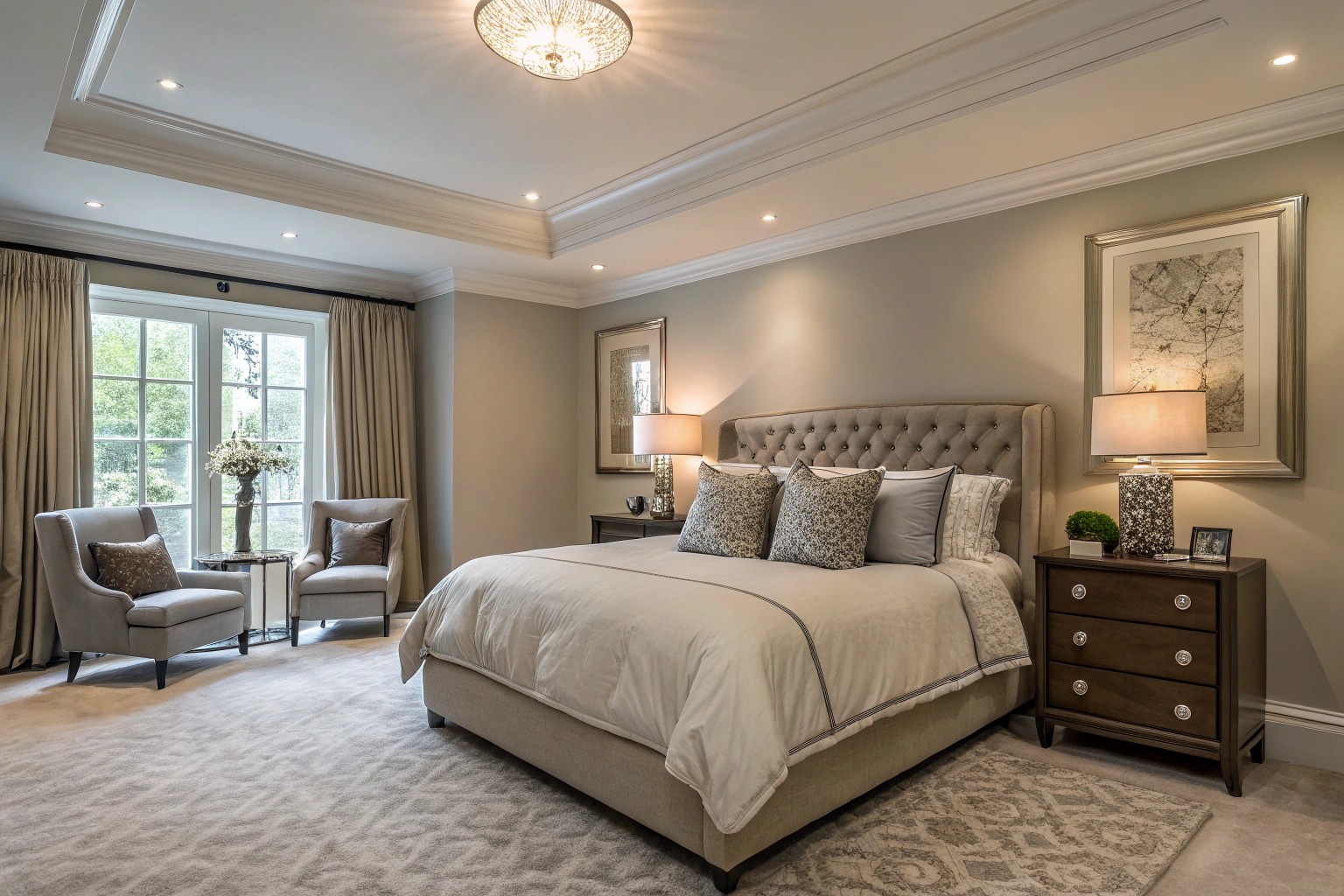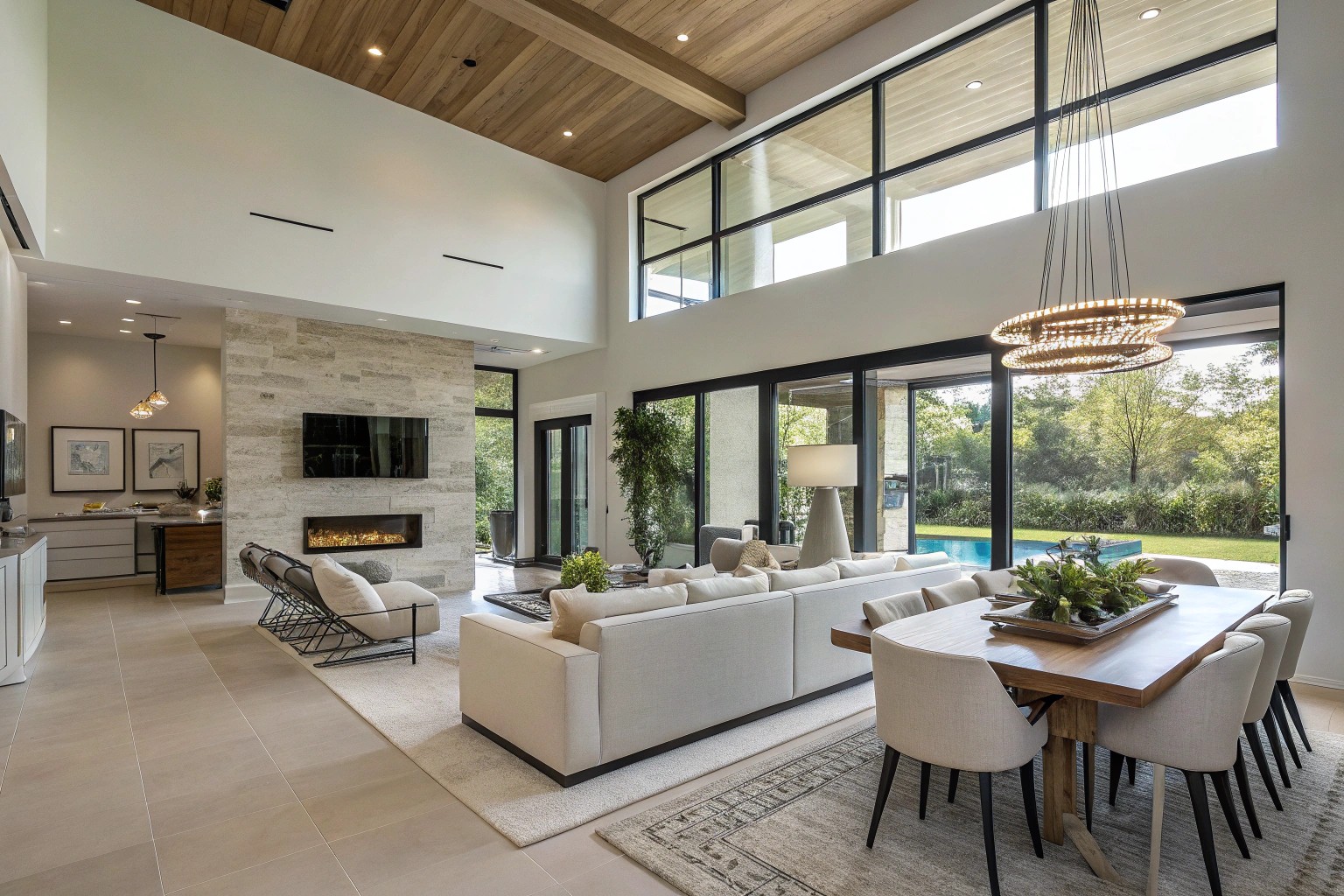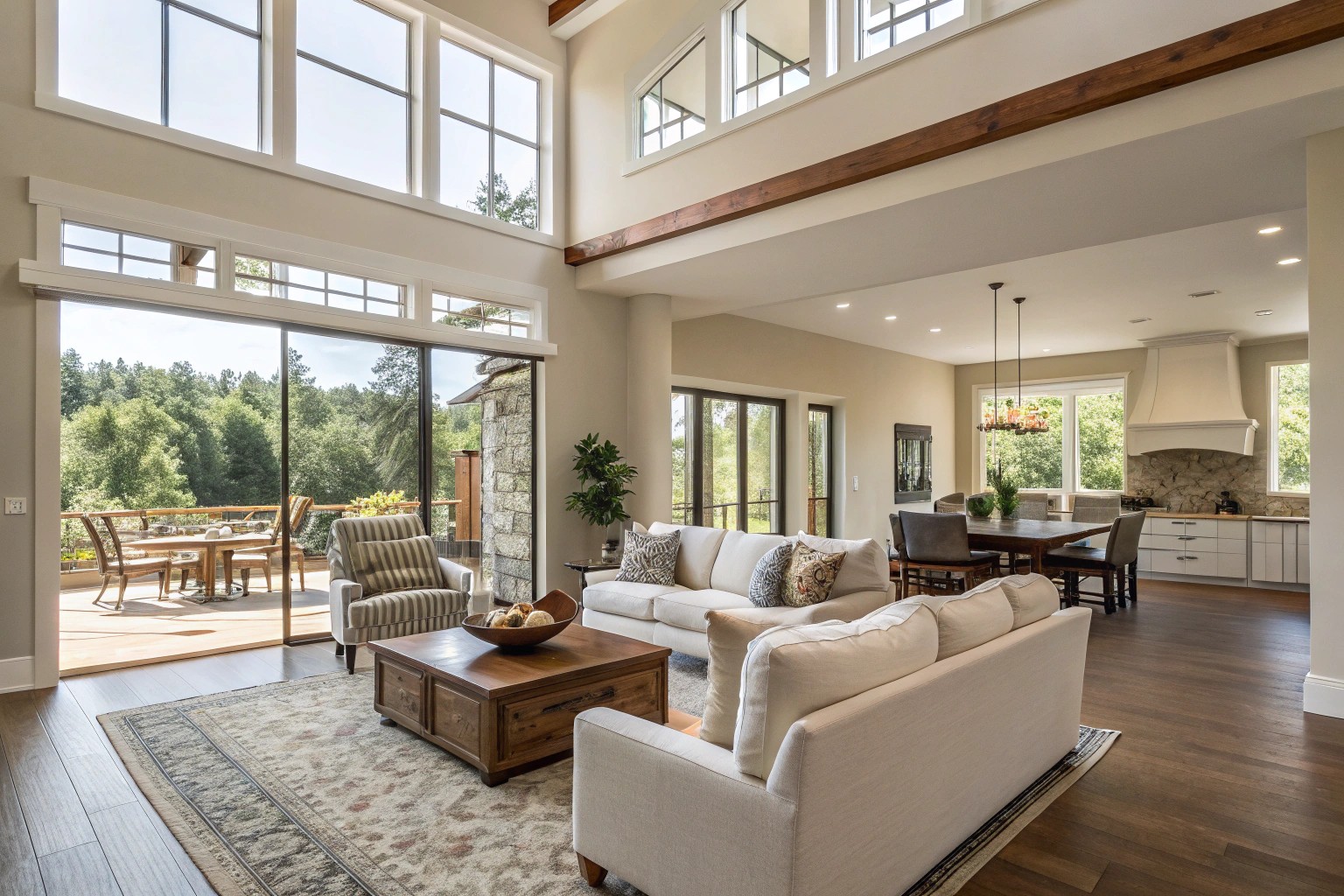Garden design has evolved significantly beyond traditional plantings and outdoor furniture. Incorporating sculptural elements can transform ordinary outdoor spaces into captivating environments that reflect personality, create focal points, and provide year-round interest. These elements bridge art and nature, adding depth and dimension to gardens of all sizes.
Understanding Sculptural Elements
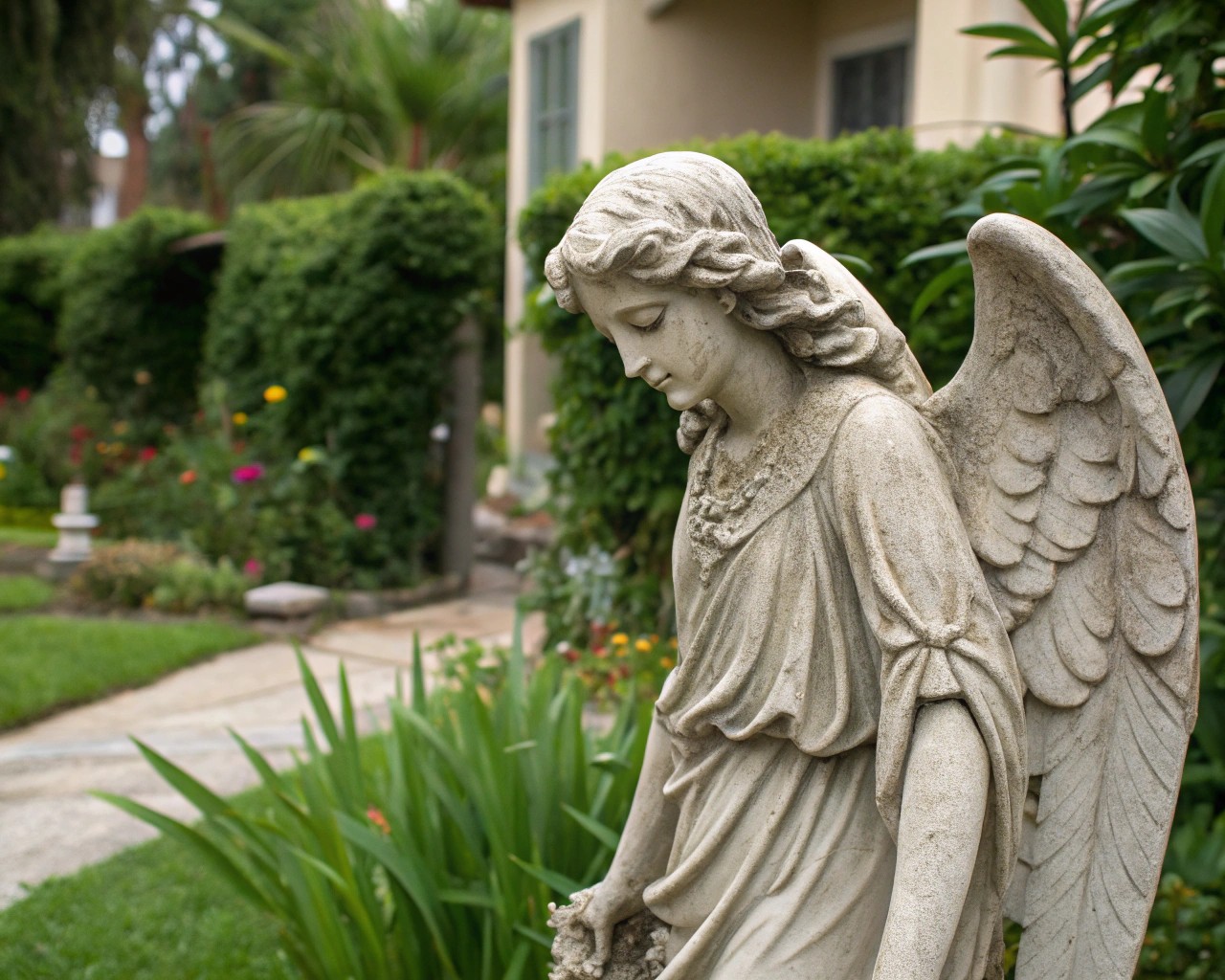
Sculptural elements encompass a wide range of three-dimensional objects and features that add artistic value to garden spaces. These elements can be purely decorative or serve functional purposes while maintaining aesthetic appeal.
Types of Garden Sculptures
Garden sculpture extends far beyond traditional statuary to include a diverse array of elements:
- Traditional statues and figurines – Classical figures, animals, abstract forms
- Modern and contemporary sculptures – Minimalist designs, abstract shapes
- Functional sculptures – Water features, artistic seating, decorative containers
- Architectural elements – Pergolas, walls, arches, screens
- Natural materials as sculpture – Boulders, driftwood, specimen trees
- Repurposed objects – Industrial remnants, salvaged materials, upcycled items
In my experience, the most successful garden designs incorporate sculptural elements that resonate with the homeowner’s personality while complementing the overall design aesthetic. I’ve found that even modest sculptures can dramatically transform a space when properly positioned and scaled.
The Role of Sculpture in Garden Design
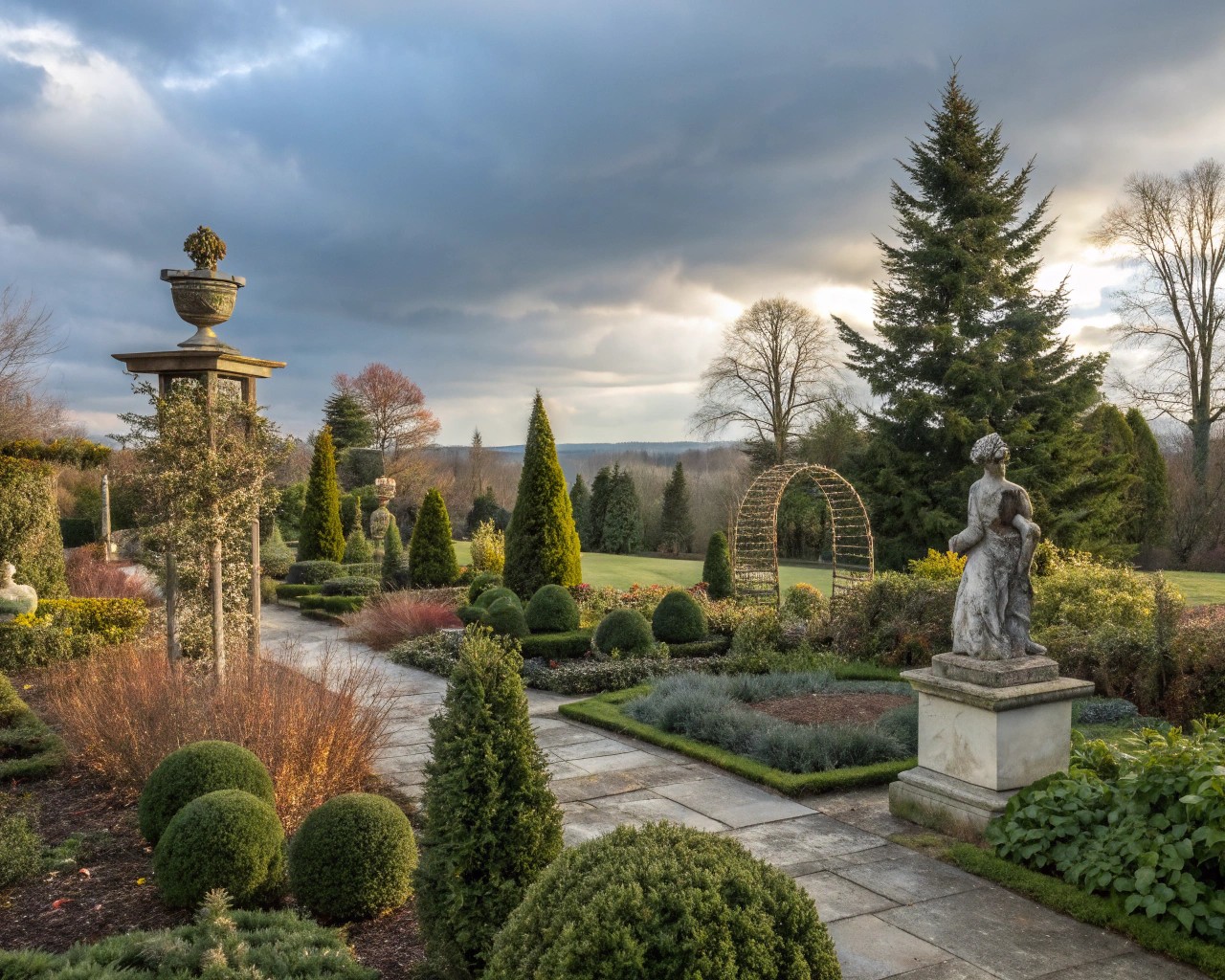
Sculptural elements serve multiple purposes in garden settings:
- Creating focal points – Drawing the eye and organizing visual experience
- Defining spaces – Delineating different areas or “rooms” within a garden
- Adding personality – Expressing the character of the space and its owners
- Enhancing themes – Reinforcing design styles or concepts
- Providing year-round interest – Maintaining visual appeal when plants are dormant
As experts like Oxford Garden Design point out, garden sculptures effectively act as focal points, drawing attention and unifying the overall design. They suggest that gardens often benefit from such features to punctuate key areas, like the end of a pathway or alongside steps.
Selecting the Right Sculptural Elements
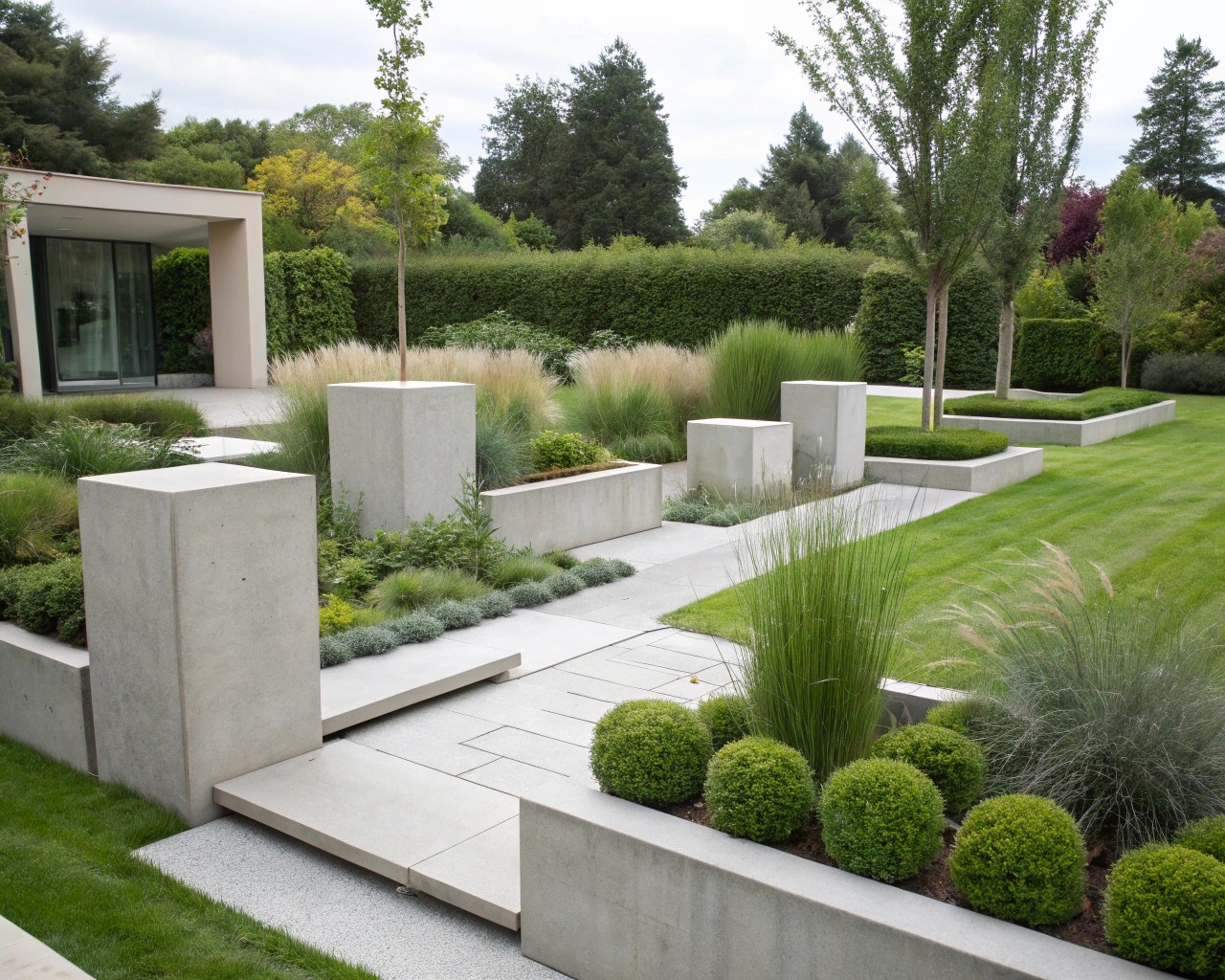
When helping clients select sculptural elements, we consider several key factors to ensure the pieces enhance rather than overwhelm their gardens.
Scale and Proportion
The size of sculptural elements must harmonize with the garden’s dimensions and other features. Common mistakes include choosing pieces that are:
- Too large for small spaces, creating a crowded feeling
- Too small for expansive areas, where they become visually lost
- Disproportionate to surrounding plants and structures
For balanced compositions, consider how the sculpture will appear from key viewing points and against its backdrop. In smaller gardens, I often recommend more modest pieces or those that create a sense of depth without overwhelming the space.
Materials and Durability
Different materials create distinct aesthetic effects and require varying levels of maintenance:
| Material | Aesthetic Quality | Durability | Maintenance | Best Applications |
|---|---|---|---|---|
| Stone | Natural, timeless | Very high | Low | Traditional gardens, permanent installations |
| Metal | Contemporary, industrial | High | Medium (varies by type) | Modern gardens, all-weather settings |
| Wood | Warm, organic | Medium | High | Natural gardens, sheltered areas |
| Ceramic | Colorful, detailed | Medium | Medium | Protected areas, accent pieces |
| Glass | Reflective, luminous | Low-Medium | Medium | Focal points, light-catching features |
| Concrete | Versatile, substantial | High | Low | Contemporary designs, built-in features |
Placement Strategies
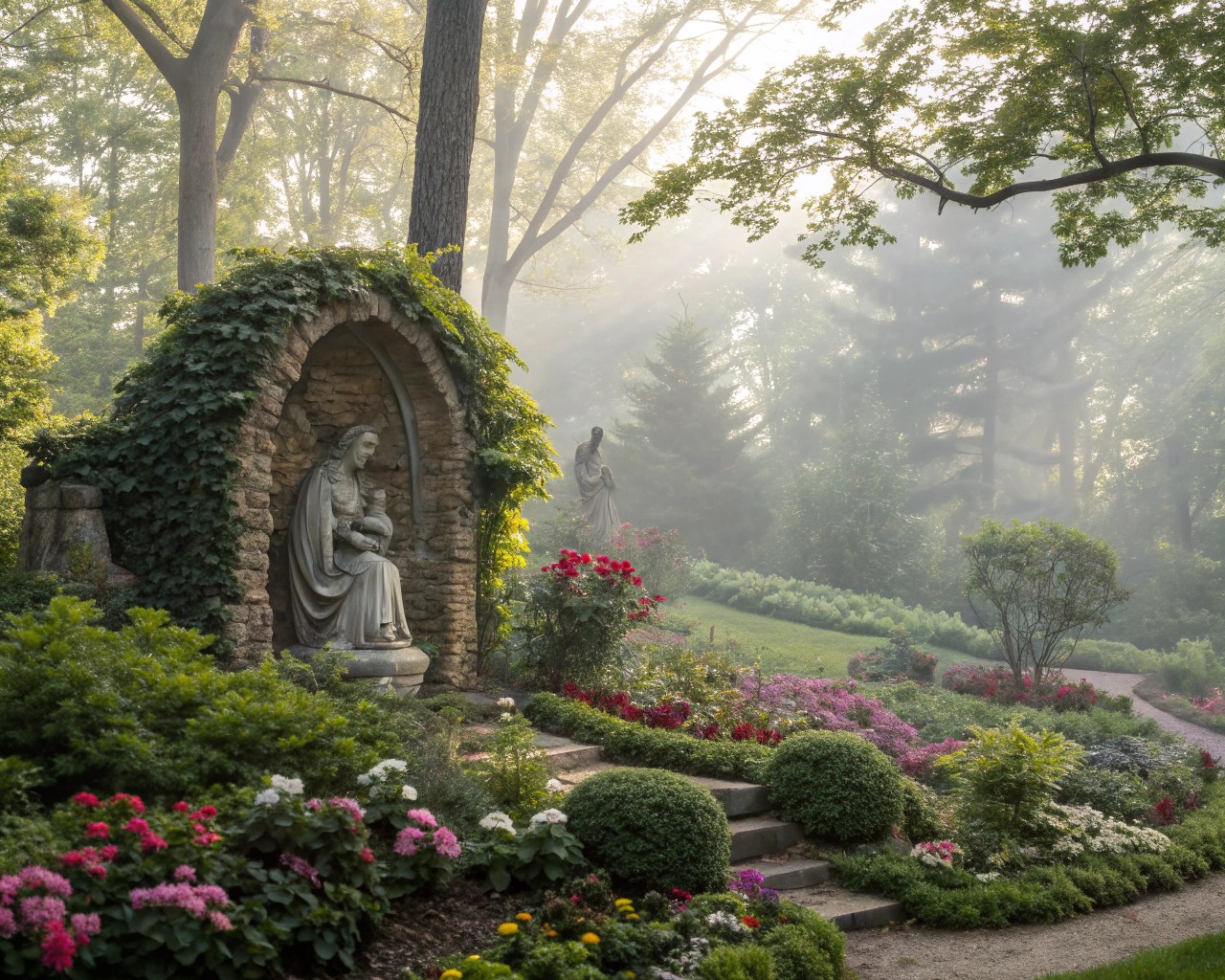
Where you position sculptural elements significantly impacts their effect on the overall garden experience:
- End-of-view placement – Installing sculpture at the terminus of a path or vista
- Surprise placement – Hiding elements for discovery during garden exploration
- Integration with plantings – Nestling sculptures among complementary plants
- Elevation changes – Using height differences to enhance dramatic effect
- Multiple viewing angles – Considering how pieces appear from different directions
“You might want to emphasize another feature, such as a doorway or a gap in the hedge with a view beyond or to enhance your planting,” suggests Oxford Garden Design. This strategic placement creates visual relationships that guide visitors through the garden experience.
Case Studies: Sculptural Success Stories
The Meditation Garden: Transforming a Town Space
A client in Brighton approached designers with a challenging brief: transform a small, shaded walled garden into a tranquil retreat while reusing existing materials. The garden featured overgrown shrubs and a poorly positioned terrace in the shadiest corner.
The solution began with a simple design featuring arches that lead visitors from the house into the garden. By removing oversized plants and repositioning the terrace to catch morning and evening sun, the designers created a more functional and appealing space. A restored pool with new brick edging became the central sculptural element, providing reflection and tranquility.
According to the case study, the original brick paving was carefully lifted and relaid for the new terrace and paths. The planting scheme evoked a cottage garden atmosphere with soft pastel colors, offering seasonal interest while being designed for easy upkeep.
The Art Collector’s Garden: Sculpture as Narrative
One particularly fascinating project involved clients who were downsizing and wanted a family-friendly garden that would showcase their extensive collection of Pacific Northwest and First Nations art. The narrow, deep city lot presented spatial challenges that required creative solutions.
The design team adopted an innovative strategy, aiming to create a seamless flow between the house and the surrounding landscape. This vision, they noted, was successfully realized through close collaboration involving the interior designer, the client, the contractor, and their own landscape architecture firm.
Rather than treating the sculptures as isolated objects, each piece was carefully integrated into the garden plan to create a cohesive narrative. The designers intentionally placed every artwork to build a story as visitors moved through the garden space, starting from the entrance.
The result redefined the traditional concept of a sculpture garden, creating an immersive experience where the garden itself became the gallery walls. Despite its artistic focus, the space remained functional for family gatherings and children’s play.
The Functional Sculpture: Solving Design Challenges
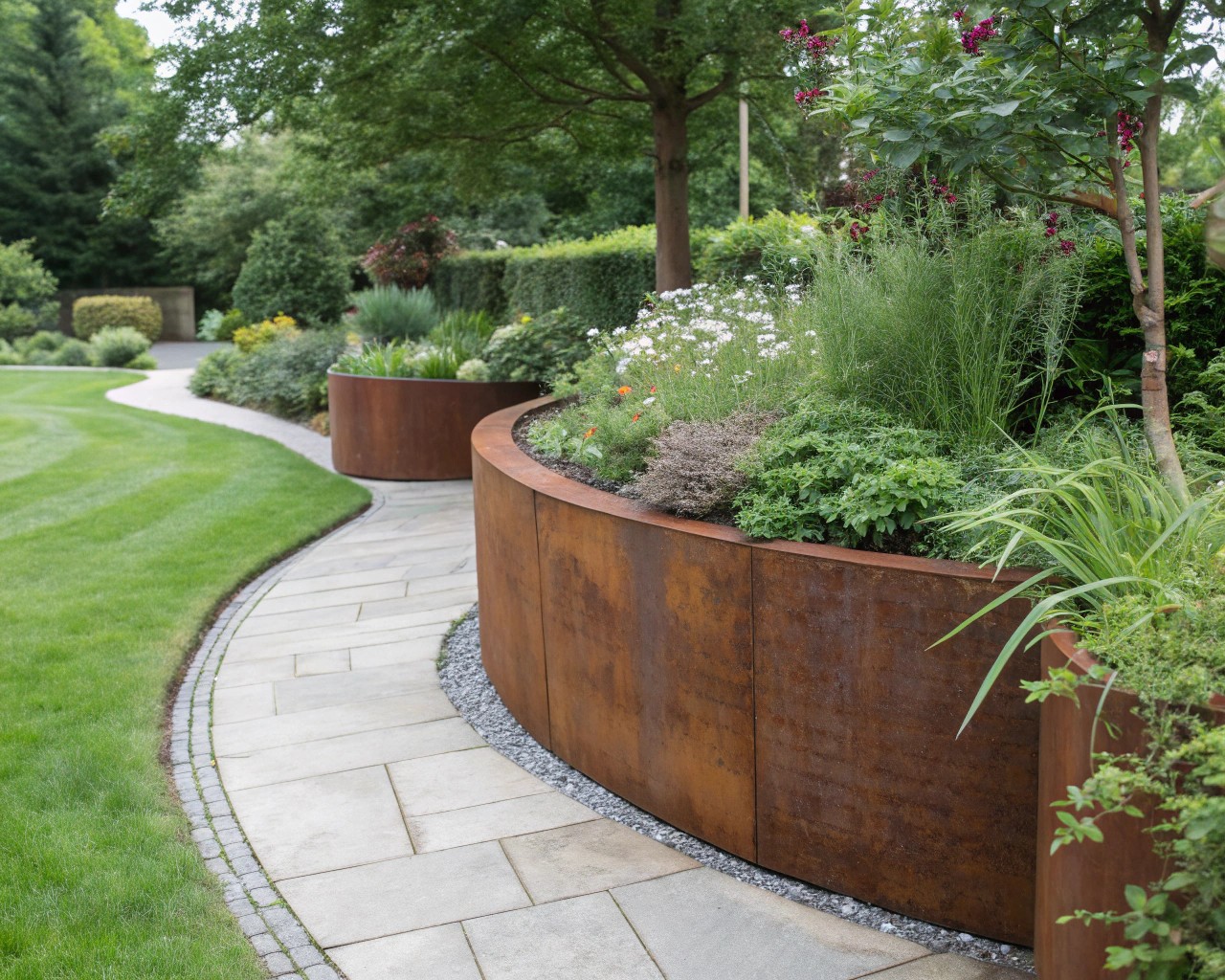
In North Sydney, designers addressed a client’s desire for both artistic elements and practical solutions through a sculptural raised planter. Responding to the homeowners’ keen interest in incorporating a sculptural piece, the design team integrated a distinctive S-shaped raised planter constructed from corten steel.
This sculptural feature served multiple functions: it provided visual interest, created a distinctive focal point, and offered practical growing space with improved soil conditions. The curved form was complemented by a vertical rod gate and fence line, creating a harmonious composition that was both safe for children and visually appealing.
This approach demonstrates how sculptural elements can solve practical problems while enhancing aesthetic appeal—the essence of good garden design.
Practical Implementation Techniques
Installation Considerations
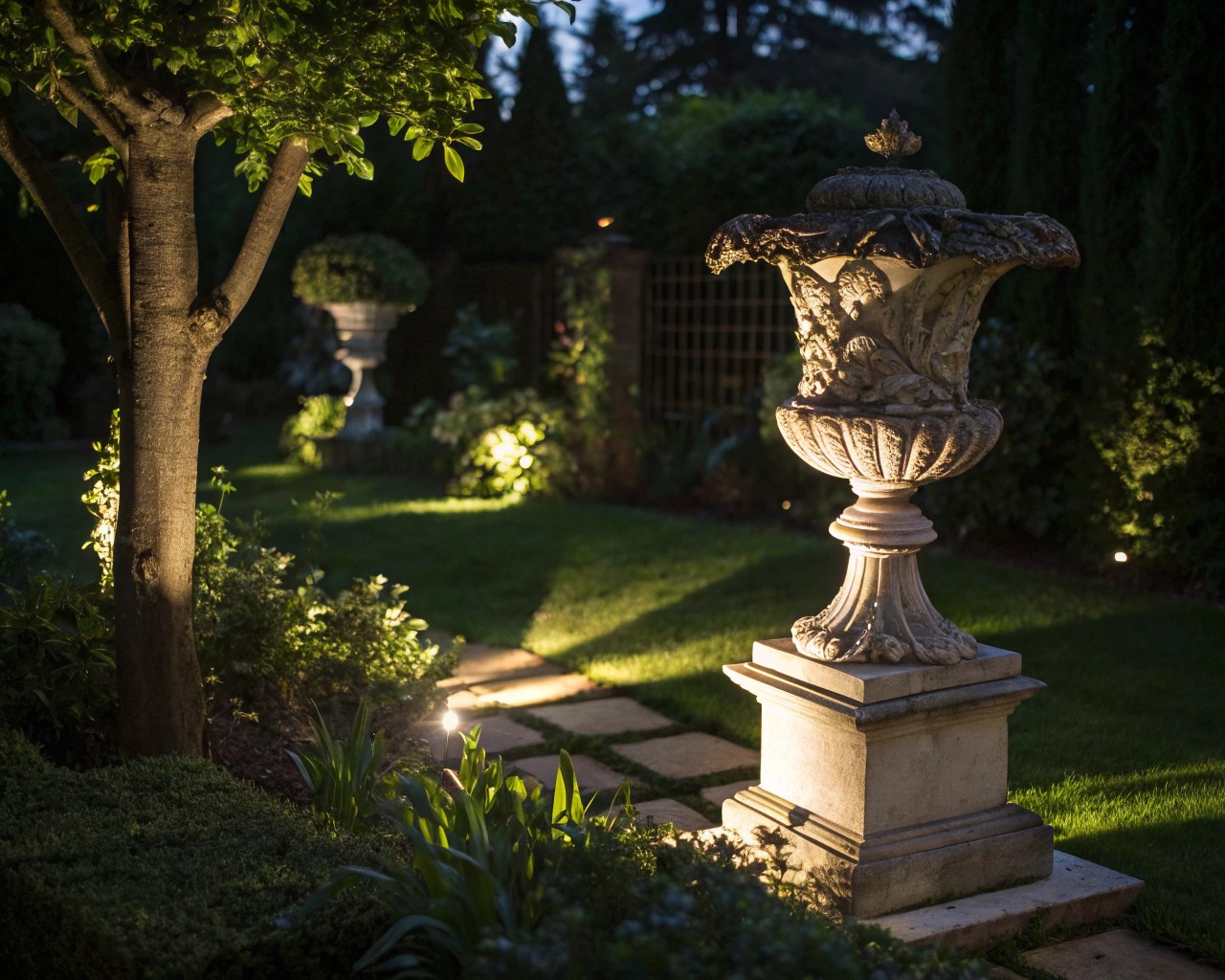
Proper installation ensures both safety and optimal visual impact:
- Foundations – Most substantial sculptures require stable bases, typically concrete footings
- Positioning – Consider sight lines, sun angles, and how shadows will interact with the piece
- Access – Plan installation routes carefully to avoid damaging existing garden features
- Timing – Install major sculptural elements early in the garden development process
You’ll want to consider long-term stability, especially for taller pieces that might catch wind. I once had to completely redesign a sculpture installation after realizing the original location would expose a delicate piece to damaging winter storms.
Lighting Sculptural Elements
Strategic lighting extends the impact of garden sculpture into evening hours:
- Uplighting creates dramatic shadows and highlights texture
- Spotlighting focuses attention on specific details
- Wash lighting provides softer, ambient illumination
- Color-changing options create dynamic nighttime effects
One client in Chevy Chase, MD, elevated their garden experience by illuminating carved Nepalese wooden screens that surrounded a copper beech tree, “providing additional interest and highlight[ing] the screens… giving the garden extended interest even after dark.”
Integrating with Plantings
The relationship between sculptures and surrounding plants requires careful consideration:
- Complementary plantings enhance rather than compete with sculptures
- Seasonal changes in vegetation create evolving contexts for permanent pieces
- Negative space around sculptures allows them to be properly appreciated
- Plant textures can echo or contrast with sculptural materials
One effective strategy, as highlighted by a designer, involves keeping plantings around sculptures low and visually neutral. This means avoiding shrubs or perennials that might visually compete with the artwork, allowing the sculptures to remain the focal point while still being grounded in a natural setting.
Budget-Friendly Approaches
Adding sculptural elements doesn’t necessarily require major investment. Consider these approaches for different budgets:
Finding Affordable Sculptures
- Garden centers and galleries offer ready-made options at various price points
- Artist cooperatives often feature emerging artists at more accessible prices
- Online marketplaces provide wide selection with varied pricing
- Student art programs at local colleges may offer quality pieces at lower costs
Creating DIY Sculptural Elements
We’ve helped many clients develop budget-friendly sculptural features:
- Repurposed objects – Architectural salvage, industrial remnants
- Natural materials – Driftwood arrangements, stone groupings, sculptural branches
- Upcycled items – Transformed everyday objects
- Temporary installations – Seasonal sculptures that change throughout the year
The Umlauf Sculpture Garden project offers a compelling example of how budget limitations can foster ingenuity. Faced with financial constraints, the project utilized decomposed granite, donated by the city’s Parks Department, for pathways. Lacking funds for conventional stone or steel edging, the designersresourcefully lined the trails with common liriope plants gathered from a private garden, achieving an effect described as both organic and functional.
Current Trends in Garden Sculpture
Contemporary Approaches
Today’s garden sculpture trends reflect broader movements in art and design:
- Minimalism and abstraction – Clean lines and simplified forms
- Kinetic sculptures – Pieces that move with wind or other natural elements
- Environmental art – Works that respond to or incorporate natural processes
- Interactive elements – Sculptures that invite physical engagement
One trend I’ve noticed in recent projects is increased interest in sculptures that change with environmental conditions—pieces that interact with rain, capture light differently throughout the day, or create sound when the wind blows.
Sustainable and Eco-Friendly Options
Environmentally conscious garden design increasingly includes sculptural elements:
- Reclaimed materials reduce waste while adding character
- Local sourcing supports regional artists and reduces transportation impacts
- Living sculptures created through special pruning techniques
- Biodegradable art that naturally decomposes over time
Cultural Influences
Garden sculpture increasingly reflects diverse cultural perspectives:
- Global traditions incorporate elements from various heritage backgrounds
- Indigenous art brings native artistic expressions into contemporary gardens
- Cross-cultural fusion blends influences to create new sculptural languages
The art collection featured in the Sculpture Garden case study exemplifies this trend, incorporating Pacific Northwest and First Nations art into a contemporary garden setting that honors cultural heritage while creating a modern living space.


